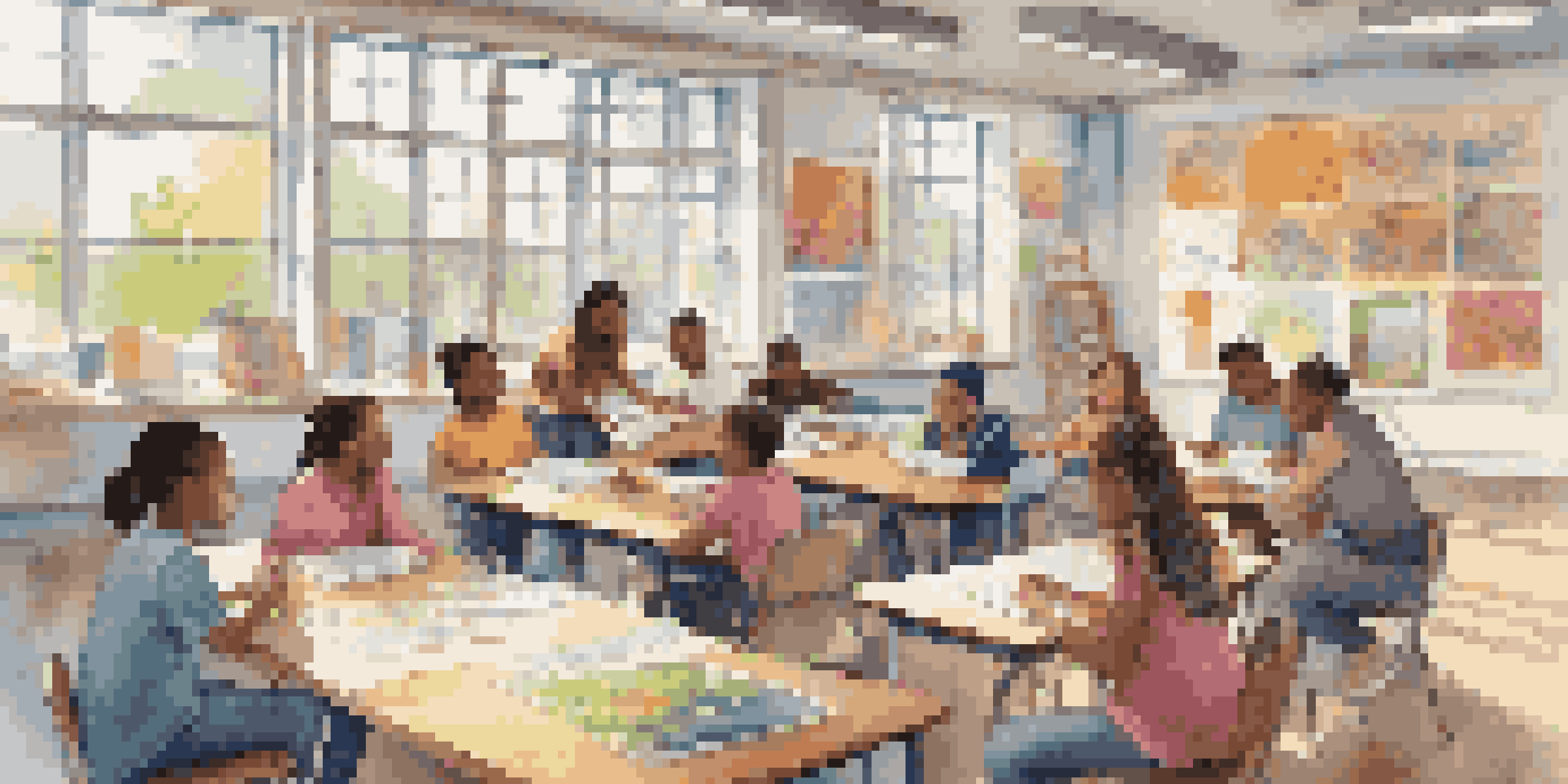Building Resilience Through Personalized Learning Strategies

Understanding Resilience in Education and Learning
Resilience, in the context of education, refers to the ability of students to bounce back from challenges and setbacks. It’s not just about coping; it’s about thriving despite difficulties. When students face obstacles, their resilience helps them adapt and grow, turning struggles into valuable learning experiences.
It’s not that I’m so smart, it’s just that I stay with problems longer.
Personalized learning plays a crucial role in fostering this resilience. By tailoring educational experiences to each student's unique needs, preferences, and abilities, we create an environment that encourages exploration and self-discovery. This individualized approach empowers students to take ownership of their learning journey.
Moreover, resilience is built when students feel supported and understood. Personalized strategies allow educators to connect with students on a deeper level, acknowledging their struggles and celebrating their successes. This supportive atmosphere nurtures resilience, encouraging students to persevere through challenges.
The Role of Personalized Learning Strategies
Personalized learning strategies encompass a variety of approaches, from differentiated instruction to adaptive learning technologies. These strategies help address the diverse needs of students, ensuring that each learner receives the right level of challenge and support. For instance, while one student may excel in reading comprehension, another might struggle with it, and personalized strategies can cater to both.

One effective personalized learning strategy is the use of learning contracts, where students set specific goals and outline the steps they will take to achieve them. This not only fosters accountability but also encourages students to reflect on their progress. When students see their efforts translating into success, their resilience is strengthened.
Resilience Drives Student Success
Resilience enables students to overcome challenges and thrive by transforming obstacles into valuable learning experiences.
Additionally, incorporating student interests into the learning process can significantly boost engagement and motivation. When learners are excited about what they’re studying, they are more likely to persist through difficulties. By personalizing content to align with students’ passions, we create a pathway for resilience to flourish.
Creating a Supportive Learning Environment
A supportive learning environment is foundational for building resilience. This means providing students with a safe space to express their thoughts, ask questions, and make mistakes without fear of judgment. When students feel emotionally secure, they are more willing to take risks and tackle challenges head-on.
Our greatest glory is not in never falling, but in rising every time we fall.
Teachers can foster this environment by actively listening to their students and providing constructive feedback. Encouraging a growth mindset, where challenges are viewed as opportunities for growth, can significantly enhance resilience. For instance, praising effort rather than just success can motivate students to keep trying, even when they face setbacks.
Furthermore, peer support plays a vital role in a supportive learning environment. Collaborative learning activities encourage students to work together, share experiences, and support one another. This camaraderie helps build resilience, as students learn that they are not alone in their struggles.
Implementing Goal-Setting Techniques
Goal-setting is a powerful tool in personalized learning that helps students develop resilience. By setting specific, measurable, achievable, relevant, and time-bound (SMART) goals, learners can focus their efforts and track their progress. This clarity fosters a sense of purpose and direction, which is essential for overcoming challenges.
When students achieve their goals, no matter how small, it boosts their confidence and reinforces their resilience. Celebrating these milestones can motivate them to set even more ambitious goals. For instance, a student who completes a challenging project may gain the confidence to tackle even greater challenges in the future.
Personalized Learning Enhances Growth
Tailoring educational experiences to individual needs fosters engagement and empowers students to take ownership of their learning.
Moreover, teaching students to set goals that align with their personal interests can enhance their engagement in the learning process. When students are genuinely invested in their goals, they are more likely to persist through difficulties, reinforcing their ability to bounce back from setbacks.
Utilizing Reflective Practices for Growth
Reflection is a critical component of the learning process that promotes resilience. By encouraging students to regularly reflect on their learning experiences, we help them identify their strengths and areas for improvement. This self-awareness fosters a growth mindset, as students learn to view challenges as opportunities for development.
Journaling is one effective method for promoting reflection. When students write about their experiences, they can process their emotions and thoughts, allowing them to develop a deeper understanding of their learning journey. This practice not only enhances resilience but also improves overall emotional well-being.
Additionally, incorporating group discussions about challenges and successes can create a sense of community. When students hear their peers share similar experiences, it normalizes struggle and reinforces the idea that resilience is a shared journey. This collective reflection can empower students to face their own challenges with renewed strength.
Leveraging Technology for Personalized Learning
Technology has transformed the landscape of personalized learning, offering innovative tools that cater to individual student needs. Adaptive learning platforms, for example, adjust content and pacing based on a student’s performance, ensuring they receive the right level of challenge. This tailored approach not only enhances learning efficacy but also builds resilience by allowing students to progress at their own pace.
Moreover, online resources and educational apps can provide students with additional support outside the classroom. For instance, interactive simulations and gamified learning experiences can make challenging subjects more engaging. When students find joy in learning, they are more likely to persist through difficulties.
Supportive Environments Build Confidence
Creating safe and supportive classrooms encourages students to express themselves and take risks, essential for developing resilience.
However, it’s essential to balance technology use with personal interaction. While digital tools can enhance personalized learning, the human element remains crucial for building resilience. Teachers should integrate technology thoughtfully, ensuring that it complements their efforts to create supportive and engaging learning environments.
Celebrating Successes and Cultivating a Growth Mindset
Celebrating successes, both big and small, is vital in building resilience among students. Recognizing achievements reinforces positive behaviors and motivates learners to continue striving for their goals. Whether it’s a shout-out in class or a simple note of encouragement, these gestures can have a lasting impact on students’ confidence and perseverance.
Cultivating a growth mindset is equally important. When students believe that their abilities can improve with effort and practice, they are more likely to embrace challenges and learn from failures. Educators can foster this mindset by emphasizing the value of hard work and resilience in the learning process.

Ultimately, a culture that celebrates effort and resilience empowers students to develop a lifelong love of learning. By creating an environment where successes are recognized and challenges are embraced, we equip students with the tools they need to thrive both in school and beyond.